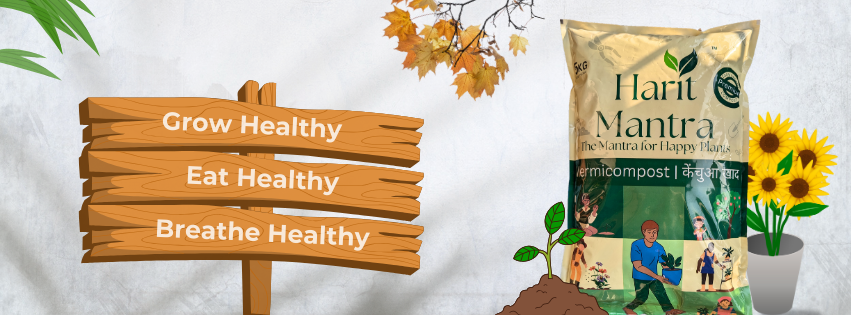Common Winter Plant Problems and How to Fix Them
- Paramjeet Dhillon
- 12 minutes ago
- 4 min read

Introduction
Winter is a beautiful season — cool mornings, foggy days, and cozy evenings. But while we enjoy the chill, our plants often struggle. Low temperatures, dry air, and limited sunlight can make even strong plants look weak or dull. Leaves may turn yellow, flowers stop blooming, and soil often stays wet for too long.
Don’t worry! With a little care and attention, you can keep your plants healthy and happy even during the coldest months. In this post, let’s look at some common winter plant problems and simple ways to fix them — all in natural, easy steps you can do at home. 🌿
1. Yellow or Drooping Leaves

Why it happens: When temperatures drop, plant growth slows down. The roots cannot absorb nutrients quickly, and too much watering during this time can make the soil soggy. This lack of oxygen and warmth makes leaves turn yellow or droop.
How to fix it:
✅ Water only when the top 2–3 cm of soil feels dry.
✅ Give plants as much sunlight as possible — move them to sunny areas during the day.
✅ Avoid watering at night; early morning watering is best because it helps roots absorb moisture before the temperature falls again.
✅ Use organic compost once every 10–15 days to strengthen roots naturally.
2. Lack of Sunlight

Why it happens:Winter days are short, and sunlight stays weaker. Most garden plants need at least 4–6 hours of direct sun, but winter often gives less than that. Without enough light, plants become pale, and flowering slows down.
How to fix it:
✅ Shift potted plants toward south-facing balconies or windows where sunlight is strongest.
✅ Rotate pots every few days so all sides of the plant get equal light.
✅ Clean leaves gently with a damp cloth — dust blocks sunlight absorption.
✅ For indoor gardens, you can even use a simple LED or grow light if sunlight is very low.
3. Overwatering

Why it happens:In winter, soil remains moist for a longer time because there’s less evaporation. Many people water plants daily out of habit, and that causes waterlogging. The roots suffocate, and fungal infections spread quickly.
How to fix it:
✅ Check soil before watering — insert your finger one inch deep; if it feels damp, skip watering.
✅ Always use pots with drainage holes.
✅ Avoid saucers filled with standing water under pots.
✅ Add a thin layer of dry compost or cocopeat on top to absorb extra moisture.
4. Frost Damage
Why it happens: In very cold areas, frost forms on leaves and burns plant tissues. Young plants and soft leaves are most affected. Frost can even kill delicate herbs and flowering plants overnight.
How to fix it:
✅ Cover outdoor plants with old cloth, newspaper, or a frost sheet at night.
✅ Move pots near walls or under a roof where it’s slightly warmer.
✅ Water lightly in the morning — moist soil keeps roots warmer than dry soil.
✅ Avoid pruning or cutting during frost — let the plant recover first.
5. Dry Indoor Air
Why it happens: When we close windows or use heaters, the air indoors becomes dry. Plants lose moisture from their leaves faster, causing brown or crispy edges.
How to fix it:
✅ Mist your plants daily using a spray bottle.
✅ Keep a bowl of water near plants or place them over a tray filled with pebbles, and water it to increase humidity naturally.
✅ Group plants together; when they transpire, they create a micro-climate with higher moisture.
✅ Avoid keeping plants too close to heaters or direct fan air.
6. Pest and Fungus Problems

Why it happens: Cold, damp conditions invite fungus and pests like aphids, whiteflies, and mites. Overwatered plants are more prone to these problems.
How to fix it:
✅ Inspect plants regularly, especially the underside of leaves.
✅ Spray a natural pest solution — mix 2 ml neem oil + few drops of liquid soap + 1 litre of water.
✅ Use the spray once a week in the morning.
✅ Remove dried or infected leaves immediately and keep the garden clean.
7. Slow Growth or No Flowers
Why it happens: Plants naturally slow down during winter — it’s their resting time. But if growth completely stops or buds dry out, it may be due to poor sunlight or weak soil.
How to fix it:
✅ Give balanced nutrition using organic compost or vermicompost.
✅ Gently loosen the topsoil every 2–3 weeks so that roots get air.
✅ Provide maximum light possible and keep plants protected from frost.
✅ Be patient — growth will increase again as the days get warmer.
Conclusion
Winter gardening may look tricky, but once you understand your plants’ needs, it becomes simple. Observe them closely — their leaves and soil will tell you what they need. Give them sunlight, moderate water, natural compost, and a little warmth.
Soon, you’ll see that your garden can stay just as green and full of life even when the temperature drops outside. 🌿✨
Grow naturally, care naturally — with Harit Mantra. 🌱




Comments